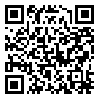Sun, Dec 7, 2025
[Archive]
Volume 12, Issue 2 (6-2020)
IJDO 2020, 12(2): 84-89 |
Back to browse issues page
Download citation:
BibTeX | RIS | EndNote | Medlars | ProCite | Reference Manager | RefWorks
Send citation to:



BibTeX | RIS | EndNote | Medlars | ProCite | Reference Manager | RefWorks
Send citation to:
Akhondi-Meybodi M, Baghbanian M, Namazi A. The Efficacy of Silymarin and Vitamin E in Non-Alcoholic Fatty Liver Disease: A Clinical Trial. IJDO 2020; 12 (2) :84-89
URL: http://ijdo.ssu.ac.ir/article-1-559-en.html
URL: http://ijdo.ssu.ac.ir/article-1-559-en.html
Associate Professor of Medicine, Shahid Sadoughi University of Medical Science, Yazd, Iran
Abstract: (2123 Views)
Abstract
Objective: Nowadays, lifestyle modification is the best treatment recommended to patients with the nonalcoholic fatty liver disease (NAFLD). The therapeutic effects of vitamin E and silybin on liver functions were documented. The present study was conducted to examine the effect of silymarin and vitamin E on patients with NAFLD.
Materials and Methods: From September 2014 to March 2015, clinical trial was conducted on 92 patients with NAFLD at 2 Shahid Sadoughi university clinical research centers. Sampling was based on convenient method. There were no randomization or blinding in this study, but two types of treatments were compared. The patients were divided in two groups of daily intake of vitamin E (400 IU) and Silymarin 280 mg for four months. Alanine aminotransferase (ALT) and liver ultrasonography were done at baseline and after four months.
Results: Eighty patients completed the course of treatment successfully .After 4 months, both groups had experienced a significant reduction in their serum ALT levels. The mean change in the ALT level from the baseline was -31.6 U/L in the silymarin group vs. -15.1 U/L in the vitamin E group (P-value= 0.07). Treatment with silymarin was more effective than vitamin E (P-value< 0.0001). The mean ALT level changed to normal was 55.0% (22 of 40 patients )in the silymarin group, while it was 45.0% (18 of 40 cases) in the vitamin E group (P-value= 0.04).
Conclusion: The treatment of NAFLD with silymarin appears to be significantly effective in biochemical improvement whereas treatment with vitamin E improves ultrasonographic parameters.
Objective: Nowadays, lifestyle modification is the best treatment recommended to patients with the nonalcoholic fatty liver disease (NAFLD). The therapeutic effects of vitamin E and silybin on liver functions were documented. The present study was conducted to examine the effect of silymarin and vitamin E on patients with NAFLD.
Materials and Methods: From September 2014 to March 2015, clinical trial was conducted on 92 patients with NAFLD at 2 Shahid Sadoughi university clinical research centers. Sampling was based on convenient method. There were no randomization or blinding in this study, but two types of treatments were compared. The patients were divided in two groups of daily intake of vitamin E (400 IU) and Silymarin 280 mg for four months. Alanine aminotransferase (ALT) and liver ultrasonography were done at baseline and after four months.
Results: Eighty patients completed the course of treatment successfully .After 4 months, both groups had experienced a significant reduction in their serum ALT levels. The mean change in the ALT level from the baseline was -31.6 U/L in the silymarin group vs. -15.1 U/L in the vitamin E group (P-value= 0.07). Treatment with silymarin was more effective than vitamin E (P-value< 0.0001). The mean ALT level changed to normal was 55.0% (22 of 40 patients )in the silymarin group, while it was 45.0% (18 of 40 cases) in the vitamin E group (P-value= 0.04).
Conclusion: The treatment of NAFLD with silymarin appears to be significantly effective in biochemical improvement whereas treatment with vitamin E improves ultrasonographic parameters.
Type of Study: Research |
Subject:
Special
Received: 2020/08/24 | Accepted: 2020/06/21 | Published: 2020/06/21
Received: 2020/08/24 | Accepted: 2020/06/21 | Published: 2020/06/21
| Rights and permissions | |
 |
This work is licensed under a Creative Commons Attribution-NonCommercial 4.0 International License. |







